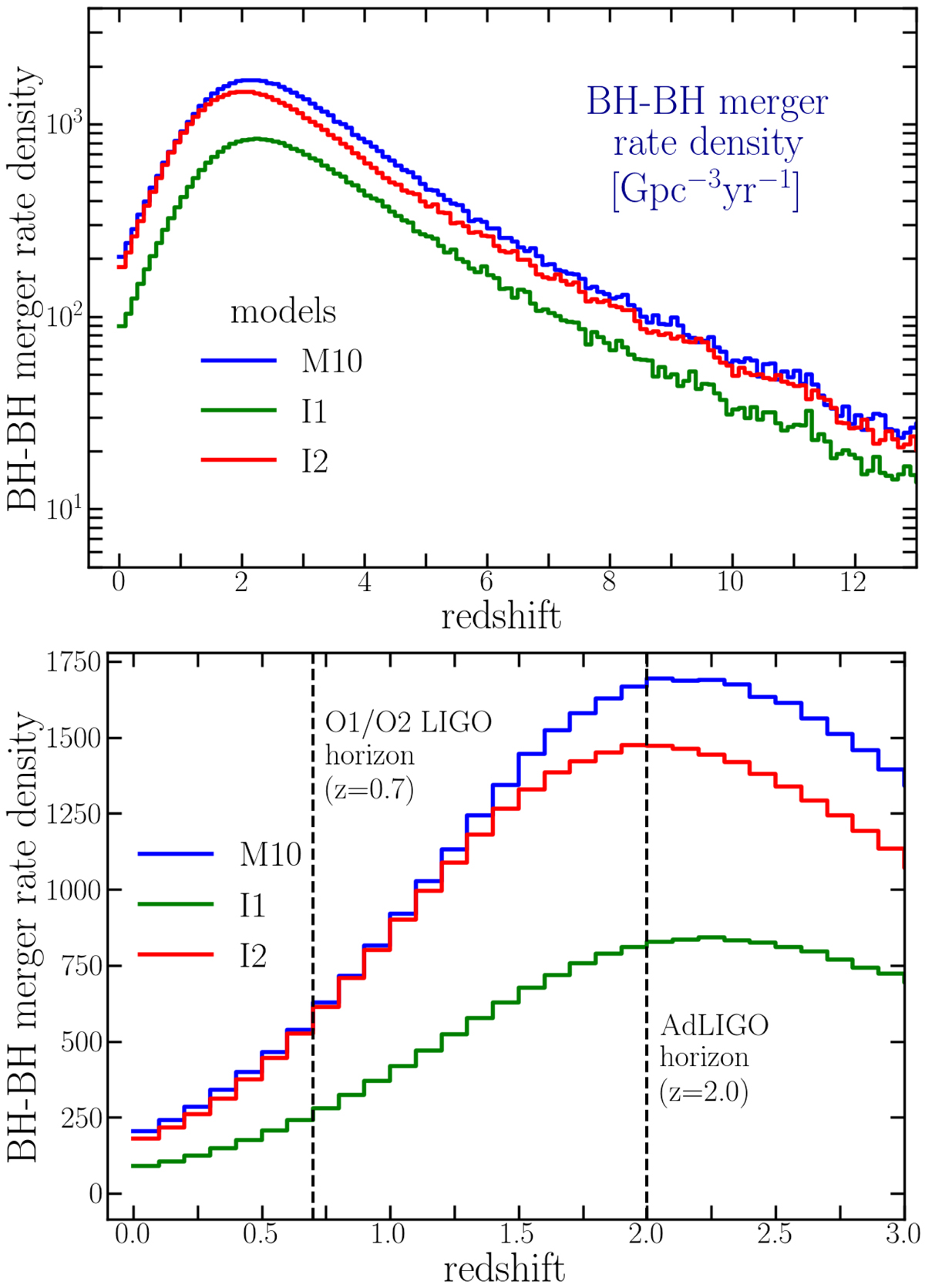Fig. 7.

Source frame BH–BH merger rate density Gpc−3 yr−1 as a function of redshift for our three models: M10 (binary distributions of Sana et al. 2012), I1 (binary distributions of MD17), and I2 (same as I1 but with a metallicity-dependent IMF). Upper panel: peak around z ≈ 2 in all the models corresponds to the maximum in the SFR (see text). Lower panel: range of redshifts accessible with the current and future sensitivity of LIGO detectors. We indicate the horizon redshifts for observation of an optimally inclined BH–BH merger with a total mass of ∼ 80 M⊙ (roughly the most massive systems in our simulations) for the sensitivities of O1 and O2 observing runs, and for the Advanced LIGO (AdLIGO). The detection distances for NS–NS mergers (Chen et al. 2017) were about dNSNS = 70 Mpc for O1 and O2 sensitivity (Abbott et al. 2018). The local BH–BH merger rate density (within z < 0.02) in our models are about 203 (M10), 89 (I1), and 181 Gpc−3 yr−1 (I2). The current limits imposed by the existing LIGO detections are 12–219 Gpc−3 yr−1 (Abbott et al. 2017a).
Current usage metrics show cumulative count of Article Views (full-text article views including HTML views, PDF and ePub downloads, according to the available data) and Abstracts Views on Vision4Press platform.
Data correspond to usage on the plateform after 2015. The current usage metrics is available 48-96 hours after online publication and is updated daily on week days.
Initial download of the metrics may take a while.


